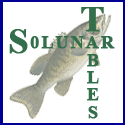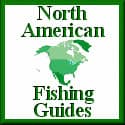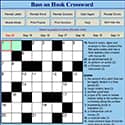Bass on Hook is Supported by our readers. As an Amazon Associate We earn commissions from qualifying purchases. For more informtion read our Amazon Affiliate Disclosure and Affiliate Disclosure Policies.
Trolling Speed For Pacific Salmon
By Paul Smith

Trolling speed for Pacific Salmon is crucial to catching lots of fish.
In the old days anglers followed the rule of "pick up your speed and use shallower depths for Coho" or "cut your speed and fish deeper for Chinook".
Thanks in large part to downriggers this no longer applies.
We can now place our gear right where the fish are without having to attach weight to the fishing line.
When trolling for Chinook salmon in the waters of Nootka Sound, you should always start with a slow troll speed and speed up as needed.
Starting off slower makes it easier to adjust to the right speed instead of starting off faster and slowing down.
More often than not you will speed up to hook more fish.
However, sometimes this is not always the case.
Hence, the slow to fast approach.
How to Find The Salmon
Keep your eye out for birds feeding on the surface, other anglers with fish on and fish jumping.
Commercial fisherman use the rule that where you see one fish jump there are usually 100 schooling.
This will give you an indicator of where the salmon will be.
Look for areas where the swell action creates foam and fish the edges.
This washing action will stir up bait fish and stun or harm them making for an easy meal.
Salmon love to hang out in these areas.
Check your tide book to determine when the slack tide is and when the water starts to ebb or flood.
These times usually determine the two biggest bites of the day.
Early morning and evening bite are also productive.
Once you find fish, zig zag through the water if you can without interferring with other anglers as this will speed up your gear on the long side and slow down your gear on the short side of the turn.
If you get a fish in the short turn for instance you would know that you are trolling too fast.
If you get a hit on the long side you can assume your trolling too slow.
This is based on the fact that when you turn the short curve will always be slower than the long curve.
Keep Track of Your Fellow Anglers For More Tips
Try to match the speed of other anglers you see who are catching fish.
Run paralell with them until you match their speed.
Make sure to keep your distance out of courtesy in case of a "fish on" scenario.
Watch their fishing patterns to determine whether they are catching fish consistantly at one speed or another.
Keep in mind their path and if they are fishing a certain hole or fishing in a circle.
How many rods are they using on their downriggers and which ones keep hooking fish?
The top rods (rods closer to the bow of the boat) are usually shallower than the bottom rods (rods closer to the stern of the boat).
Sometimes anglers will catch fish more on one rod than the others due to a slow turn or a sudden change in speed.
Technological Advances to Control Your Trolling Speed
Todays technology provides a speedometer built into the fish finder.
The speed is recorded either through the transducer or gps.
If you have such a tool on your boat than the speeds I use most frequently range from 2.7 m/hr to 4.5 m/hr.
These will be good starting points to determine the right speed for that day.
My guiding experience over the years has taught me that usually I will be only trolling at a snails pace if I am using gear without a downrigger.
In Northern BC or fast moving water like tide rips this technique is used quite frequently with cut plug herring and slip weights.
Summing Up Trolling Speed For Pacific Salmon
One thing I've learned over the years is to not assume what works one day will work the next.
Pacific salmon are affected by a lot of different variables each and every day.
Sometimes it is the tide movement, other times it can be the weather.
Can even be a combination of the two.
Unless the "bite" is on you will be searching and experimenting with gear and speed.
Speed is important, so don't ignore it.
It controls the most important part of fishing: "the action on your lure".
Most pacific salmon are enticed to bite by the action of the lure.
The more action the better the catch rate.
If you are fishing amongst a group of boats and everyone is catching fish, chances are you're speed needs adjusting.
Remember to keep your rod tip up and tight lines!
Paul
If you have a question or comment for Paul please feel free to send it via our Pro Staff Question And Answer form.
Your questions will be answered within 24-48 hours by Paul.
Look for other articles written by Paul Smith in Paul's Pro Staff Angler Profile










